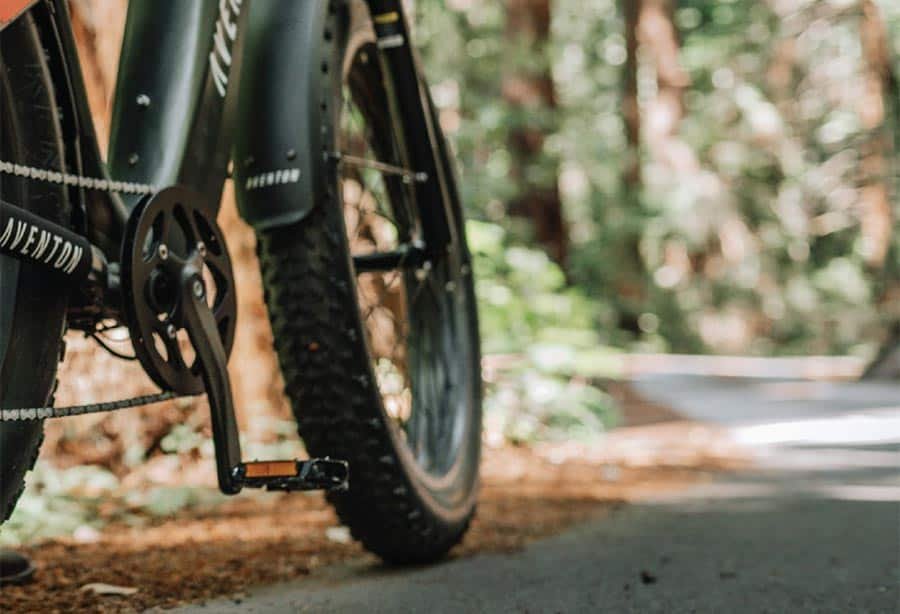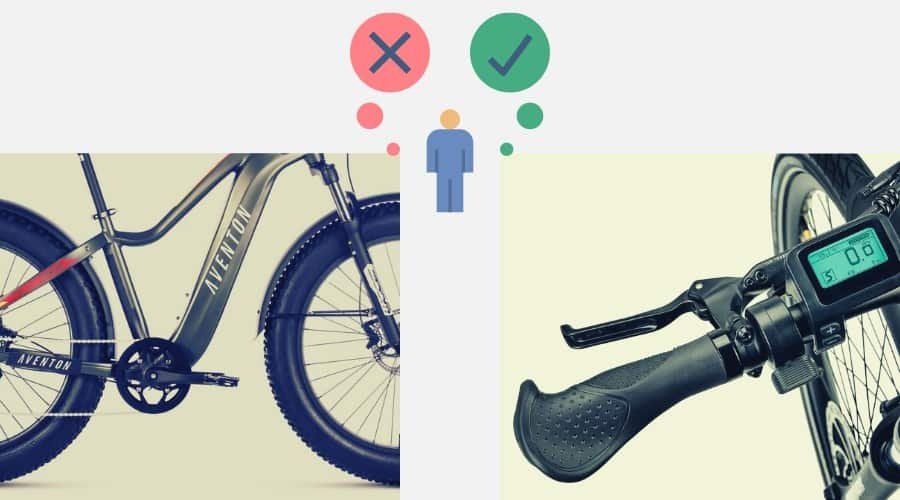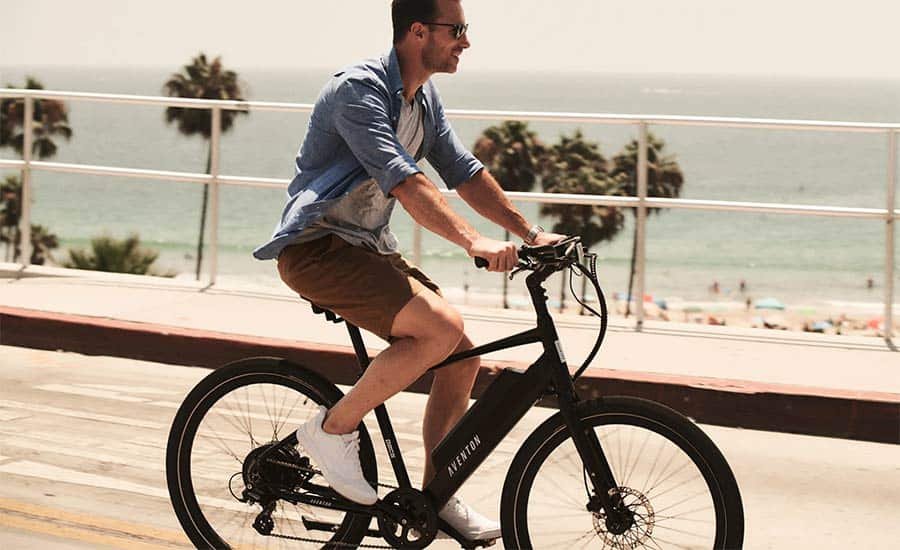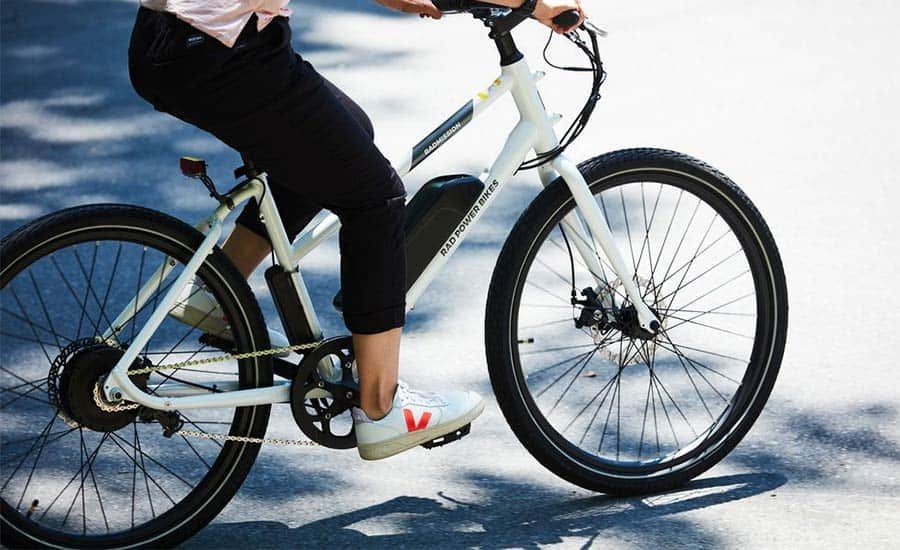Have you ever felt like giving up cycling halfway through your journey because of exhaustion or difficulty? Well, you’re not alone. According to a recent survey, over 50% of people who start cycling (or any other firm of exercise) quit within the first six months due to physical strain. This is where pedal assist on an electric bike comes in, offering a solution to a common problem faced by cyclists.
Pedal assist is a feature on electric bikes that helps to propel the rider forward with an added boost of power. It works by sensing the rider’s pedaling motion and adding electric power to amplify their efforts. This means that riders can cycle further, faster and with less physical exertion, making cycling more accessible to a wider range of people.
In this article, we’ll explore the benefits of pedal assist on an electric bike, how it works, and some of the factors to consider when choosing an electric bike with pedal assist. So, whether you’re an avid cyclist looking to explore new routes, or someone who wants to cycle more but struggles with physical limitations, keep reading to learn more about the game-changing feature of pedal assist
What is Pedal Assist?

Pedal assist is a feature found on many electric bikes that provides additional power to the rider through an electric motor.
The motor is triggered by the rider’s pedaling and provides electric assistance based on the rider’s effort. In other words, the harder the rider pedals, the more assistance the motor provides.
This allows the rider to tackle hills and headwinds with ease, or simply cruise along with less effort. Pedal assist systems can be adjusted to provide different levels of assistance, allowing the rider to choose the right level of support for the task at hand.
Overall, pedal assist is a convenient and effective way to enhance the electric bike riding experience and make it more enjoyable.
How Does Pedal Assist Work on Electric Bike?
Pedal assist on an electric bike works by using sensors to detect the rider’s pedaling effort. When the rider starts pedaling, the sensors send a signal to the bike’s electric motor, which then provides additional power to the pedals.
The motor then amplifies the rider’s pedaling effort so it seems like your legs are exerting more effort than they actually are, so the harder the rider pedals, the more power the motor provides. Most pedal assist systems use a torque sensor to measure the rider’s pedaling effort.
The torque sensor detects the force applied to the pedals and sends a corresponding signal to the motor. The motor then adjusts its output accordingly, providing more or less assistance based on the rider’s input.
In addition to the torque sensor, some pedal assist systems also use a cadence sensor to detect the speed at which the rider is pedaling. This information is used to fine-tune the assistance provided by the motor, making the system more responsive and intuitive to use.
Overall, pedal assist on an electric bike is a seamless and intuitive system that allows the rider to enjoy a more effortless riding experience.
By complementing the rider’s effort, pedal assist makes it easier to tackle hills, headwinds, and other challenging terrains, and allows the rider to enjoy the ride without getting exhausted.
What is a Throttle on an Electric Bike?

A throttle on an electric bike is a handlebar-mounted control that allows the rider to control the power output of the electric motor without having to pedal. This is different from pedal assist, where the motor provides assistance proportional to the rider’s own pedaling effort.
With a throttle, the rider can simply twist the grip to increase the power of the motor, providing an extra boost to help get up hills, navigate headwinds, or reach higher speeds.
Some electric bikes have both a throttle and pedal assist, allowing the rider to choose the best mode of operation for the task at hand.
Throttles are particularly useful for riders who want a more relaxed and effortless riding experience, or for those who want to cover long distances without getting tired.
However, it’s important to note that the use of a throttle may affect the battery life of the electric bike and could also reduce the overall range of the bike, as the motor is drawing power from the battery even when the rider isn’t pedaling.
Overall, a throttle is a convenient and effective way to control the power output of an electric bike, providing the rider with a higher level of control.
Whether you’re a seasoned cyclist or new to the electric bike scene, a throttle can help you get the most out of your e-bike and enjoy a more effortless riding experience.
What Are the Types of Pedal Assist?
There are several different types of pedal assist systems used on electric bikes, each with its own unique features and benefits. Some of the most common types of pedal assist include:
◩ Cadence-based pedal assist: This type of pedal assist uses a cadence sensor to detect the speed at which the rider is pedaling. The motor provides a fixed level of assistance based on the cadence, making the system simple and intuitive to use.
◩ Torque-based pedal assist: This type of pedal assist uses a torque sensor to detect the force applied to the pedals. The motor provides assistance proportional to the rider’s effort, making the system highly responsive and intuitive.
◩ Combined cadence and torque-based pedal assist: This type of pedal assist uses both a cadence sensor and a torque sensor to provide a more accurate and responsive system.
The motor adjusts its output based on both the rider’s cadence and the torque applied at the cranks, providing a seamless and intuitive riding experience.
Overall, each type of pedal assist system has its own unique features and benefits, and the best system for you will depend on your individual needs and preferences.
Whether you’re looking for a simple and intuitive system, or a more advanced and customizable system, there’s a pedal assist system out there to meet your needs.
Which is Better Pedal Assist or Throttle?

The answer to whether pedal assist or throttle is better depends on the individual needs and preferences of the rider.
Pedal assist provides a more natural and intuitive riding experience, as the rider’s own pedaling effort controls the level of assistance provided by the motor.
This can help improve the rider’s overall fitness and make the ride feel more like a traditional bike ride. Pedal assist is also more efficient, as the rider is still pedaling and helping to conserve the battery life of the bike.
On the other hand, a throttle provides a more relaxed and effortless riding experience, as the rider can control the power output of the motor without having to pedal.
This can be especially helpful for riders who want to cover long distances, navigate hills or headwinds, or reach higher speeds with less effort.
In summary, the choice between pedal assist and throttle largely depends on the individual needs and preferences of the rider.
If you prefer a more natural and intuitive riding experience, or if you want to improve your overall fitness, pedal assist may be the better choice. If you want a more relaxed and effortless ride, or if you want to cover longer distances with less effort, a throttle may be the better option.
What is the Difference Between an Electric Bike and a Pedal Assist Bike?
An electric bike and a pedal-assist bike are similar in many ways, but there are some key differences between the two.
An electric bike, also known as an e-bike, is a bicycle that is powered by an electric motor. The motor provides assistance to the rider, making it easier to pedal and increasing the speed at which the bike can travel.
The motor is typically powered by a rechargeable battery, and the amount of assistance can be adjusted to suit the needs of the rider.
A pedal-assist bike, on the other hand, is an electric bike that uses a pedal-assist system to provide the rider with assistance. The pedal assist system detects the rider’s pedaling effort and amplifies it using motor power.
The level of assistance can be adjusted to suit the needs of the rider, and the motor will only provide assistance while the rider is pedaling.
In other words, a pedal-assist bike is a type of electric bike that uses a pedal-assist system to control the power output of the motor, while an electric bike can have a variety of control systems, including a throttle, a pedal-assist system, or a combination of both.
Overall, the main difference between an electric bike and a pedal-assist bike is the way in which the rider controls the power output of the motor.
If you want a more natural and intuitive riding experience, or if you want to improve your overall fitness, a pedal-assist bike may be the better choice.
If you want a more relaxed and effortless ride, or if you want to cover longer distances with less effort, an electric bike with a throttle may be the better option.
Are Pedal Assist Bikes Worth It?

Whether a pedal-assist bike is worth it or not depends on the individual needs and preferences of the rider. Pedal assist bikes can offer several benefits that make them a great option for many riders:
◩ Improved fitness: Pedal assist bikes allow riders to get some exercise while still providing the benefit of an electric motor. This can help improve overall fitness and make it easier to ride longer distances.
◩ Increased range: Pedal assist bikes can help extend the range of a ride, as the rider’s own pedaling effort helps conserve the battery life of the bike.
◩ Convenient commuting: Pedal assist bikes can be a great option for commuting, as they can make it easier to cover longer distances, navigate hills or headwinds, and arrive at your destination refreshed and ready to work.
◩ Eco-friendly transportation: Pedal assist bikes are an eco-friendly mode of transportation, as they produce zero emissions and require no fuel.
◩ Fun and enjoyable: Pedal assist bikes can be a lot of fun to ride, providing a unique and enjoyable riding experience that is different from a traditional bike or a car.
However, pedal-assist bikes are not for everyone and there are some factors to consider before making a purchase:
◩ Cost: Pedal assist bikes can be more expensive than traditional bikes, so it’s important to consider the upfront cost as well as the ongoing maintenance and replacement costs of the battery and other components.
◩ Weight: Pedal assist bikes can be heavy, which can make them difficult to handle and store.
◩ Maintenance: Pedal assist bikes require regular maintenance and battery replacement, which can be time-consuming and costly.
In other words, whether a pedal assist bike is worth it or not depends on the individual needs and preferences of the rider.
If you’re looking for a convenient and eco-friendly mode of transportation, improved fitness, or a fun and enjoyable riding experience, a pedal-assist bike may be worth it for you.
However, if you’re on a tight budget or you don’t have the space to store a heavy bike, a pedal-assist bike may not be the best choice.
When Should I Use Pedal Assist?
Pedal assist can be used in a variety of riding situations to make your ride more comfortable and efficient. Some of the most common situations in which you may want to use pedal assist include:
◩ Hill Climbing: When riding up hills, pedal assist can provide extra power to help you get up the hill more easily.
◩ Commuting: If you’re commuting to work or school and you want to arrive at your destination refreshed and without too much effort, pedal assist can help make your ride more comfortable and enjoyable.
◩ Long Distance Riding: If you’re planning to ride a long distance, pedal assist can help you cover more ground with less effort and arrive at your destination feeling less tired.
◩ Headwinds: When riding into a headwind, pedal assist can provide extra power to help you maintain your speed and make your ride more comfortable.
◩ Riding with a Load: If you’re carrying a heavy load on your bike, such as groceries or a backpack, pedal assist can help you propel the payload more easily and arrive at your destination without too much effort.
Overall, pedal assist is a useful feature for a variety of riding situations, and it can help make your ride more comfortable, efficient, and enjoyable.
The exact situations in which you use pedal assist will depend on your individual needs and preferences, as well as the specific features of your bike.
Do Pedal Assist Bikes Charge When You Pedal?

In most cases, pedal-assist bikes do not charge when you pedal. Pedal assist simply provides an extra boost of power from the electric motor to supplement your own pedaling effort.
The electric motor is powered by a rechargeable battery, and it’s the battery that needs to be charged, not the electric motor itself.
To charge the battery, you’ll need to plug it into a power source, such as a wall outlet, using the charger that comes with your bike.
The charging time will vary depending on the size of the battery and the charging speed of the charger. In general, it takes several hours to fully charge a typical electric bike battery.
It’s important to regularly charge your battery to ensure that it’s ready to use when you need it.
Most electric bike batteries have a limited number of charge cycles, so it’s important to use them wisely and avoid overcharging or draining the battery completely.
By properly maintaining your battery, you can help extend its life and ensure that your bike is always ready to ride.
Can You Adjust Pedal Assist?
Most pedal assist systems on electric bikes can be adjusted. The level of assistance provided by the pedal assist system can usually be changed, allowing you to customize the amount of support you receive from the electric motor while pedaling.
There are typically several levels of assistance available, ranging from low to high, and you can choose the level that best suits your needs for the current riding condition.
For example, you may choose a lower level of assistance when riding on flat terrain and a higher level when riding up hills.
The way to adjust the pedal assist level varies depending on the specific bike and the type of pedal assist system it has.
Some bikes have a simple button or switch on the handlebars that allows you to change the level of assistance, while others have a digital display that shows the current level and allows you to make adjustments using buttons or a touchscreen.
It’s important to understand how to adjust the pedal assist level on your bike, as this can have a big impact on the overall performance of the bike and your riding experience.
By adjusting the level of assistance, you can customize the bike to suit your needs and preferences and ensure that you’re getting the most out of your pedal assist system.
Do All Ebikes Have Pedal Assist?

Not all eBikes have pedal assist, but most do. Pedal assist is a common feature on many electric bikes, and it provides additional support from the electric motor to supplement your pedaling effort.
This can make riding the bike easier and more enjoyable, especially when riding up hills or carrying a heavy load. However, not all electric bikes have pedal assist, and some bikes may only have a throttle instead.
A throttle is a separate control that you can use to engage the electric motor directly, without having to pedal. Some riders prefer a throttle-only setup, as it provides a more straightforward and simple riding experience.
In addition, some high-end electric bikes may have both a pedal assist system and a throttle, allowing you to choose the mode of operation that best suits your needs for various riding conditions.
Ultimately, the choice between a pedal-assist bike and a throttle-only bike, or a combination of both, will depend on your individual needs and preferences, as well as the specific features and capabilities of the bike you’re considering.
It’s a good idea to test-ride several different bikes and compare their features and capabilities to determine which type of bike is the best fit for your needs.
What Are the Benefits of Pedal Assist?
Pedal assist on an electric bike offers several key benefits, including:
✅ Improved efficiency: With pedal assist, you can cover more distance with less effort, making it easier to tackle hills, headwinds, and other challenging terrains.
Pedal assist can also help extend the range of your electric bike, as you’re able to pedal and generate your own power, supplementing the power from the electric motor.
✅ Enhanced exercise: Pedal assist can provide a more physically active riding experience, as you’re still required to pedal and generate some of your own power. This can help to improve cardiovascular fitness and leg strength.
✅ Better control: Pedal assist allows you to better control the speed and power of the bike, as the level of assistance provided by the electric motor is directly linked to your own pedaling effort.
✅ Cost savings: By using pedal assist, you can reduce the amount of power consumed by the electric motor, extending the range of the bike and reducing the need to recharge the battery as frequently.
✅ Customizable assistance: Most pedal assist systems allow you to adjust the level of assistance provided by the electric motor, making it possible to customize the bike to your specific needs and preferences.
Overall, pedal assist can provide a more efficient, enjoyable, and active riding experience, making it a popular choice for many electric bike riders.
Whether you’re commuting to work, exploring nature, or simply enjoying a leisurely ride, pedal assist can help you get the most out of your electric bike.
How Fast Can You Go With Pedal Assist?

The maximum speed you can reach with pedal assist on an electric bike will depend on several factors, including the specific bike, the type of pedal-assist system, and local regulations.
In most countries, electric bikes are classified into three categories: Class 1, Class 2, and Class 3.
Class 1 electric bikes have a pedal assist system only and are limited to a top speed of 20 mph (32 km/h), while Class 2 electric bikes have a throttle-assist system that is limited to a top speed of 20 mph. Class 3 electric bikes are speed pedelecs or S-pedelecs which can reach up to 28mph.
However, some countries may have different regulations, and it’s always important to check the local laws and regulations to determine the maximum speed allowed for electric bikes in your area.
It’s also worth noting that the maximum speed you can reach with pedal assist will depend on the specific bike and the type of drive system. Some bikes may have a higher top speed, while others may be limited to a lower speed.
The maximum speed can also be affected by the rider’s weight, the terrain, and the level of assistance provided by the pedal assist system.
In general, most riders will be able to reach a top speed of around 20 mph with pedal assist, although this can vary depending on the specific bike and the conditions.
If you’re looking for a higher top speed, you can purchase higher-powered electric bikes with adjustable speed governors. These kinds of bikes can operate as various classes of e-bikes, but are usually capable of exceeding 28mph.
The drawback of these bikes is that deactivating their speed governor renders them illegal to ride in public areas, due to local laws.
FAQs
How does pedal assist work on an electric bike?
Pedal assist works by using a sensor to detect the rider’s pedaling and then providing an extra boost of power from the bike’s motor, which is activated when the rider pedals.
Is pedal assist the same as a throttle on an electric bike?
Generally speaking, pedal assist and a throttle are two different features on electric bikes. While a throttle provides power without the need to pedal, pedal assist requires the rider to pedal to activate the motor.
Are there different levels of pedal assist on electric bikes?
Most electric bikes have different levels of pedal assist, ranging from low to high. The higher the level of assist, the more power the motor will provide to the rider’s pedaling effort.
How long does the battery last on a pedal assist bike?
The battery life of a pedal assist electric bike can vary widely, depending on several factors, including the capacity of the battery, the power of the electric motor, the rider’s weight, the terrain, and the level of pedal assist used.
On average, most electric bike batteries will last between 20 and 50 miles, although some high-end models can last for 100 miles or more.
Can you turn off pedal assist on ebike?
Most electric bikes with pedal assist systems allow you to turn off the assist and ride the bike as a regular bicycle. This can be useful for riders who want to challenge themselves, or for those who want to conserve battery power for a longer ride.
The method for turning off pedal assist will vary depending on the specific bike and the type of pedal-assist system, so it’s always best to consult the owner’s manual or the manufacturer’s website for specific instructions.

